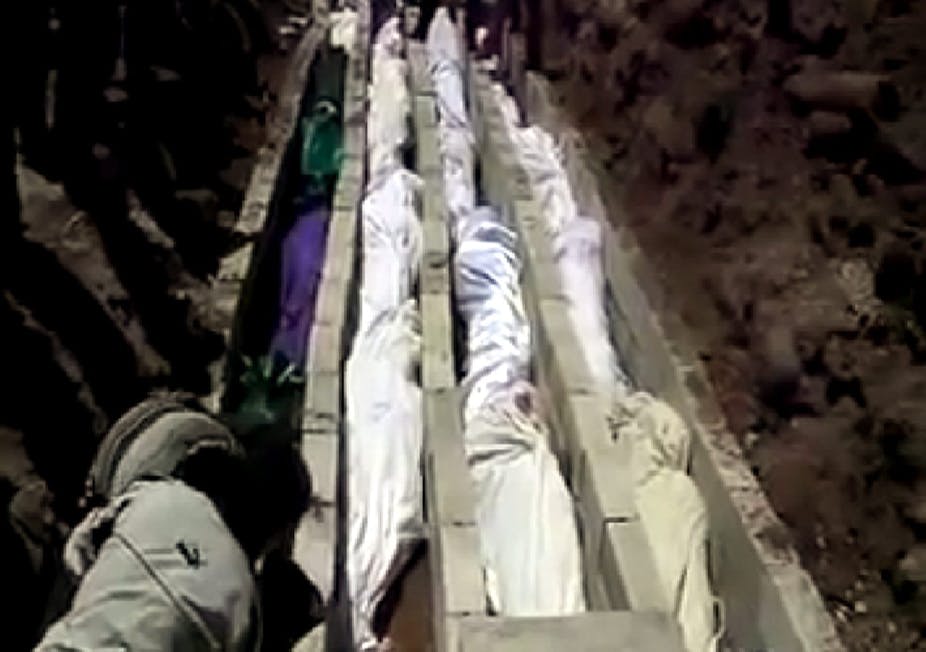While the photos currently coming out of Houla look like scenes of an apocalypse, anyone with Syrian friends or connections has seen equally horrifying videos and photos circulating on Facebook or Youtube for the past year. (I’ve refrained from linking to the Youtube clips as they are truly distressing to watch.)
For all of the genuine utterances of revulsion and dismay at the terrible, terrible images of broken and dismembered little bodies that peppered our newspapers this week, our hand-wringing over the Houla massacre nevertheless sounds disingenuous.
It should not – it should never – have come to this. At least 10,000 (by the most conservative estimates) civilians died when Bashar Al Assad’s father crushed an uprising in the early 1980s in Hama. PBS called it “one of the bloodiest chapters of modern Arab history”.
I do not begrudge the disgust, or doubt the veracity of people’s reactions to the photos from Houla. When you look at the Houla photos it’s perfectly understandable to ask what sort of monster could do this to his own people or what type of human being could slit a child’s throat. It’s just that we’ve forgotten – or we never knew – that Syria has been ruled by a family of monsters and its extended support network for decades.
While I am young enough not to remember Hama, I am old enough to remember Bosnia. In particular, I remember a picture of the body of a boy of about seven or eight lying face down on a Sarajevo street, blood pouring out from under his head while two UN peacekeepers stood nearby, impotent, helpless, and ironic – as if to symbolise the toothlessness of their organisation with its noble aims.
The breakup of Yugoslavia took place less than two decades ago, but in terms of how we communicate and react, it was a completely different world. It was one in which there was no Facebook where we could vent our grief and horror as we shared and re-shared the appalling photos. There was no Twitter for rapper Chris Brown to proclaim “not cool” after hashtagging Sarajevo to his nine million followers, or for the rest of us to implore the taking of action to stop Assad’s thugs from continuing to unleash the rivers of civilian blood that will one day mark his legacy. This time, we have no excuse.
It was the photo of the Bosnian kid that I thought of, when the images from Houla came out. The gutsy front page of the Independent on Sunday 27 May – one of the bravest front pages I’ve ever seen – slammed the international community for “averting its gaze” when it came to Syria. We looked away from Hama in 1982, and we’re looking away now. And so it plays out like Sarajevo, or Groundhog Day, or a scratched CD.
Condemnations have been uttered by the dozen by world leaders, the UN security council has met, and (after Russia and China came to the party) it has come to a resolution denouncing the violence. The Arab League will hold an emergency meeting and effectively do nothing. And just as men in blue berets stood helplessly while Bosnian children were being slaughtered, not one of these things will bring relief to Syrians, at least not in the immediate future.
In the Islamic worldview, du’a or prayer is thought of as a shield and a source of comfort for believers.
I have (as a Muslim and a human being) run out of words on Syria - so livid am I with anger and sadness that I do not even know what to make du’a for, in either the real world, or on Twitter.

